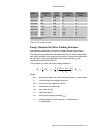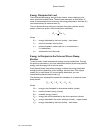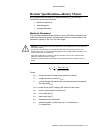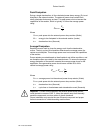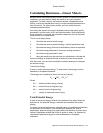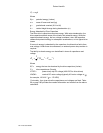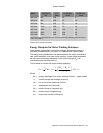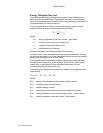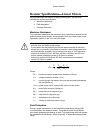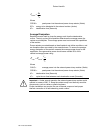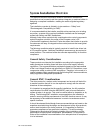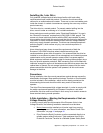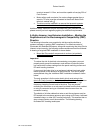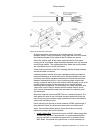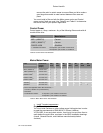
Parker Hannifin
Appendix B External Power-Dump Resistor Selection 187
Resistor Specifications⎯Linear Motors
Having determined the amount of energy to dump (ER), you can then
calculate the resistor specifications.
• Maximum resistance
• Peak dissipation
• Average dissipation
Maximum Resistance
This calculation determines the maximum value of resistance needed for the
external power-dump resistor. We recommend that you select a lower value
resistance, typically in the 22 to 100 ohm range.
Important — It is possible to overload an Aries drive or the combination of
an Aries drive and power dump resistor.
If at the end of the calculations you find the required resistor is less than
allowed for your specific Aries model, or requires a watt rating greater than
the rated resistors available, do not use the Aries drive in your application.
Aries drive models AR-01xx, AR-02xx, AR-04xx, AR-08xx, and AR-13xx,
require external resistance values of 22 Ohms or greater.
Aries drive models AR-20xE and AR-30xE require external resistance
values of 8 Ohms or greater
()
vMM
tkV
I
V
R
LF
DFTRIP
R
⋅+
⋅⋅
==
Where
R
R
= maximum external power dump resistance (Ohms)
V = voltage across the resistor (V
TRIP
)
I = current through the resistor (drive current required to decelerate
the load)(Amps
rms
)
V
TRIP
= power dump trip DC voltage (400 volts for Aries drives)
k
F
= motor force constant (N/Amp
rms
)
M
F
= mass of forcer in kilograms (kg)
M
L
= load mass in kilograms (kg)
t
D
= deceleration time (Seconds)
v = velocity in meters per second (m/s)
Peak Dissipation
During a single deceleration, all the calculated power-dump energy (ER)
must dissipate in the external resistor. The external power-dump resistor
then slowly dissipates that energy as heat. This peak power must not exceed
the capabilities of the resistor, which is typically 10 times the average power
rating.



